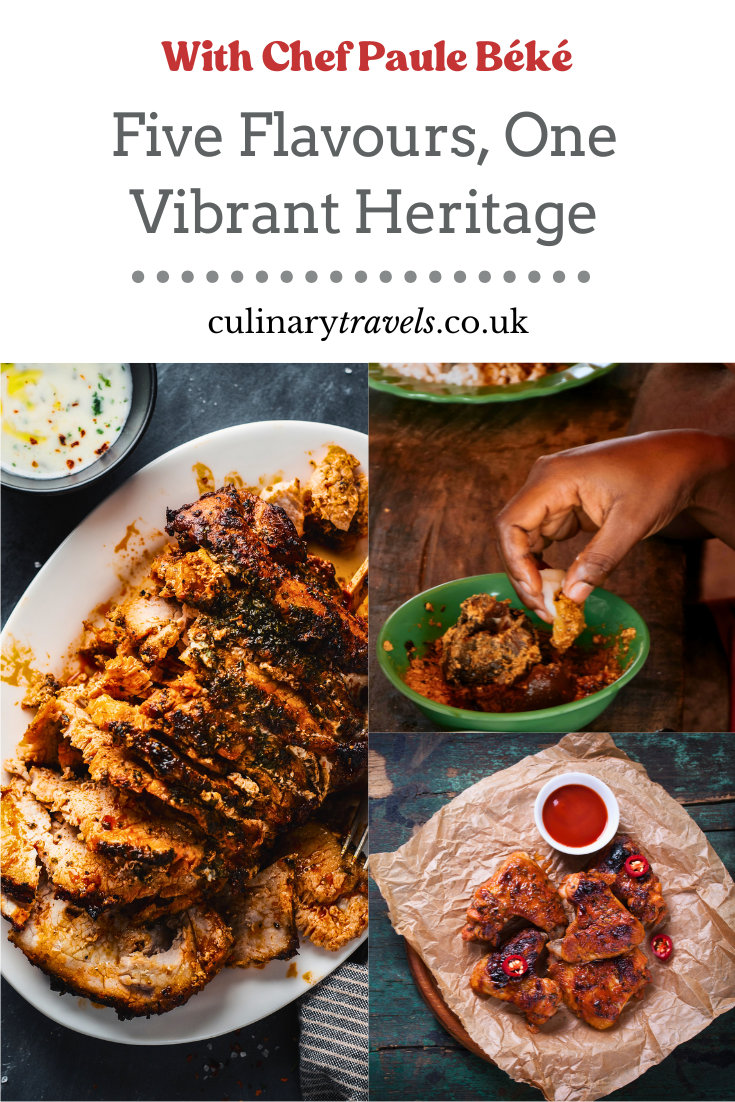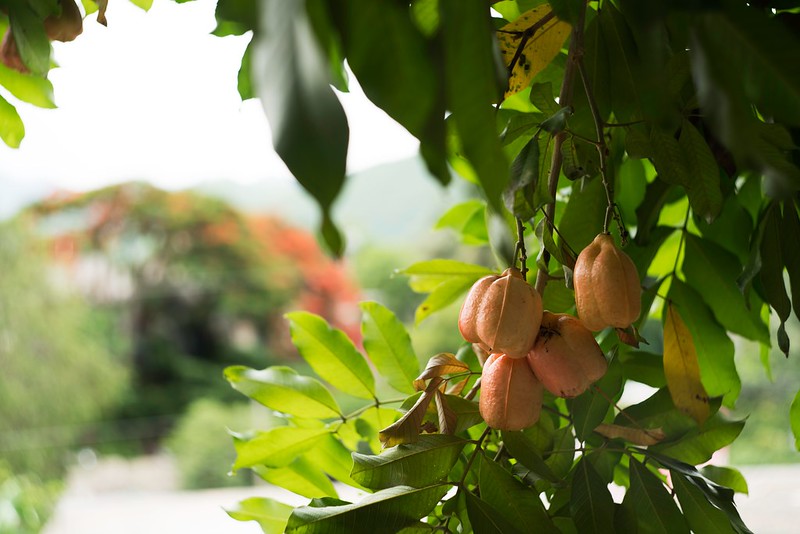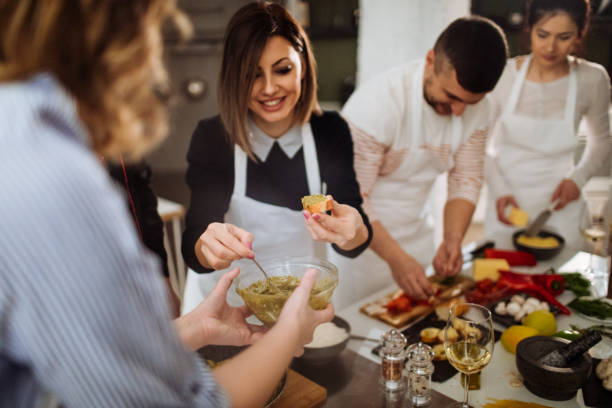Blog
Take Your Tastebuds to the Ivory Coast with 5 Extraordinary Spices

This feature was produced with support from a commercial partner. Editorial control remains with the author.
West Africa’s food culture is rich with colour, aroma, and layered spice traditions that deserve far more attention on global tables. In today’s feature, chef Paule Béké of Douceurs D’Ivoire invites us into the heart of her childhood in the Ivory Coast, sharing five extraordinary spices that have shaped her cooking—from bustling markets in Abidjan to her cosmopolitan kitchens in London and Paris.
Prepare to taste, smell, and imagine the flavours that inspired a young chef to turn curiosity into culinary artistry.

Chef Paule Béké grew up in the Ivory Coast in a household where food was a daily expression of joy. Both her parents were chefs: her father, an award-winning Maître Rôtisseur, brought precision and professional discipline to their home kitchen, while her mother mastered both pastry and traditional African cuisine with an intuitive grasp of flavour and balance. Together, they created an environment where culinary excellence was simply part of everyday life.
As an only child, Paule had free rein in this culinary playground, sneaking tastes, learning the subtleties of different ingredients, and developing an early fascination with the mysterious flavours that made her family’s dishes so distinctive.
She recalls that her understanding of food deepened on visits to the bustling markets of Abidjan with her mother. At around ten years old, surrounded by mounds of aromatic spices and herbs, Paule began to connect the sensory experiences of her childhood to their sources. What had once been hidden elements in her family’s cooking suddenly had names, textures, and origins.
That revelation—realising that every spice has its own personality and potential—sparked a creativity that still drives her cooking today. These five Ivorian ingredients, she says, have remained faithful companions throughout her journey, from those formative years in West Africa to her professional kitchens in Paris and London.

Baobab: From childhood snack to trendy superfood
Long before baobab appeared in Western health food aisles, it was already woven into everyday life across the Ivory Coast. For Paule, the fruit of the majestic baobab tree was a childhood treat — a powdery, citrusy grain that offered both nourishment and delight.
She remembers eating baobab powder mixed with sugar. This tangy sherbet packed a punch of vitamin C, or turning it into juice and frozen lollies flavoured with vanilla or condensed milk. The fruit’s contrasting textures — its pale, powdery pulp and glossy black seeds — fascinated her as much as its flavour.
Beyond nostalgia, baobab remains one of her most versatile ingredients. Packed with antioxidants, fibre, and vitamin C, it works beautifully as both a nutritional boost and a culinary tool. Paule often uses it as a natural thickener, particularly in seafood reductions, where its subtle acidity enhances flavour without overpowering.
Simple home application
Try whisking a teaspoon of baobab powder into plain Greek yoghurt with a drizzle of honey for breakfast. The tartness brightens the yoghurt while adding nutritional value and a lovely beige colour. You can also add a pinch to smoothies for extra vitamin C or use it as a natural souring agent in marinades for fish and chicken – its acidity helps tenderise proteins while adding complexity.
Paule's fine dining twist
Create a baobab mousse by whisking the powder with double cream, a touch of sugar, and vanilla. It tastes remarkably similar to lemon meringue filling but with more depth and earthiness. Serve alongside grilled fish or as a palate cleanser between courses.

Akpi: The aromatic powerhouse
If baobab is soft and citrusy, akpi is bold and aromatic. These small, dry seeds — sometimes mistaken for chickpeas — carry a deep, savoury perfume that Paule describes as “a whole spice blend in one ingredient.”
Originating in the coastal regions of West Africa, akpi has long been associated with seafood dishes. Paule’s father, who grew up near the sea, often used it in rich fisherman’s stews, where the toasted seeds added both complexity and warmth.
Akpi’s magic lies in its natural oils, which intensify when heated. Traditionally, the seeds are toasted in a dry pan, then ground while still warm. Paule advises restraint: over-grinding turns them into a paste, but both forms — powder and paste — have their place in the kitchen.
Simple home application
Add a tiny amount (1-2 grams) to savoury pastry dough for tarts or quiches. It works similarly to how you might use saffron, providing aromatic depth without overwhelming other flavours. You can also sprinkle tiny amounts into salad dressings or mix into breadcrumb coatings for fish and chicken.
Paule's fine dining twist
Mix ground akpi with breadcrumbs, herbs, and a little olive oil to create an akpi-crusted rack of lamb. The spice's natural oils help create a beautiful golden crust while infusing the meat with complex, aromatic flavours that pair wonderfully with traditional accompaniments.

Suya Powder: The ultimate everything spice
Few spice blends capture the joy of West African street food like suya powder. Traditionally used for meat skewers grilled over open flames, suya is a mix of ground nuts, chilli, and aromatics — each family or region guarding their own version.
Paule’s connection to suya is deeply personal: she still works with the same spice blender her father hired for family celebrations. His version balances heat with nutty sweetness, creating a powder that transforms anything it touches.
Suya powder’s versatility has made it one of Paule’s kitchen staples. She uses it not only for barbecued meats but as a seasoning for dressings, dips, and even desserts.
Simple home application
Create suya mayonnaise by mixing one part suya powder with three parts good-quality mayonnaise and adding a squeeze of lemon or lime juice. This transforms ordinary sandwiches and makes an excellent dip for chips or crudités. For that classic West African barbecue taste, rub suya powder onto meat 30 minutes before cooking – it works brilliantly on chicken, beef, or even firm fish.
Paule's fine dining twist
Paule sometimes incorporates tiny amounts of suya powder into chocolate truffles, where its earthy heat creates an unexpected but delightful contrast with rich, dark chocolate. The key is restraint – just enough to add intrigue without overwhelming the palate.

Soumbala: The natural umami bomb
Soumbala, also known as locust beans or iru, is one of West Africa’s most distinctive ingredients. Fermented and sun-dried, its small dark seeds carry an intense savoury depth that Paule compares to aged Parmesan or soy sauce.
For those unfamiliar with its strong aroma, soumbala can be an acquired taste — but it’s worth the journey. Once integrated into a dish, it provides that elusive “fifth taste”: umami. Paule uses it to enrich sauces, soups, and stews, adding a depth of flavour that transforms the simplest recipes.
Simple home application
Add half a teaspoon of ground soumbala to tomato-based pasta sauces or sprinkle a pinch over cooked rice for an immediate umami kick. You can also add pinches to soups, casseroles, or any slow-cooked dish that needs more savoury depth. It works particularly well in bean-based dishes and lentil preparations. The umami depth it provides will surprise you, making familiar dishes taste richer and more complex.
Paule's fine dining twist
Paule incorporated soumbala into a modern take on blanquette de veau, the classic French veal stew traditionally served with rice. Adding soumbala to the sauce bridges French technique with West African flavours, creating something familiar yet entirely new.

Amanglin: Our sacred basil
Amanglin, or sacred basil, represents the fragrant, herbal side of Ivorian cooking. Revered for its flavour and healing properties, it’s often used in both food and traditional remedies. The fresh leaves carry a peppery, complex aroma — more assertive than Mediterranean basil, yet equally versatile.
Paule uses amanglin to bring aromatic brightness to her dishes, whether folded into herb crusts for lamb or infused in oils and creams. She loves how a few leaves can change the tone of a dish completely, lending it an unmistakably Ivorian signature.
Simple home application
If you can source fresh amanglin, try adding a few leaves to green salads where you might normally use basil. The peppery notes work particularly well with tomatoes, soft cheeses, and olive oil-based dressings. You can also dry fresh leaves and crumble them into herb blends for roasted potatoes or infuse a few leaves in olive oil for drizzling over grilled vegetables or finished soups.
Paule's fine dining twist
Infuse amanglin into cream for an unusual panna cotta that showcases its delicate herbal qualities. The dessert becomes a conversation starter — familiar in technique but surprising in flavour, embodying the cross-cultural approach that defines modern cooking.

Embracing the adventure
Together, these five ingredients — baobab, akpi, suya powder, soumbala, and amanglin — reflect the vibrancy and depth of Ivorian cuisine. For Paule, they are both memory and inspiration, grounding her creative cooking in heritage while connecting it to contemporary kitchens across Europe.
She encourages home cooks to start small, experiment with confidence, and taste as they go. These spices, she says, aren’t meant to dominate but to harmonise — to help other flavours sing.
“Once you’ve tasted the layers they bring,” Paule says, “you’ll never look at your spice rack the same way again.”

Frequently Asked Questions
Where can I buy these Ivorian spices?
Some of these ingredients, like baobab powder and suya spice, are increasingly available in health food shops, African or international grocery stores, and online marketplaces such as Amazon or speciality spice retailers. For harder-to-find items like amanglin and akpi, look for West African or Ivorian speciality shops, or check online sellers that focus on African culinary ingredients.
Can I substitute these spices if I can’t find them?
Yes, although each spice has a unique flavour profile, you can experiment with substitutes. For baobab’s tartness, a mix of lemon zest and a pinch of citric acid works. Soumbala’s umami can be mimicked with fermented soy products or miso in a pinch. Akpi has a nutty, aromatic punch, so roasted fenugreek seeds or a touch of ground coriander could partially replicate the effect. Suya powder can be approximated with a mild chilli + peanut + smoked paprika mix.
How should I store these spices?
Most of these spices store best in airtight containers away from heat and light. Baobab powder, akpi, and suya powder last several months dry; soumbala keeps longer if sealed properly and away from moisture; fresh amanglin should be used quickly or dried for longer shelf life.
Are these spices suitable for all diets?
These ingredients are naturally plant-based and gluten-free, making them suitable for vegan and vegetarian diets. Always check for any blends that might include additives or allergens if purchased commercially.
How can I start using them without overwhelming my dishes?
Start small: sprinkle a pinch into familiar dishes and taste as you go. Each spice is potent and meant to enhance, not dominate, your cooking. Gradually increase as your palate adapts.

About Paule Béké
Paule Béké, chef and founder of Douceurs D’Ivoire, is best known to many as a recent contestant on MasterChef: The Professionals. Now based in London, Paule was born in the Ivory Coast and spent her early years there before moving to France at fourteen.
Although she initially pursued a business degree and built a career in the corporate world, her true calling was always in the kitchen. That passion eventually led her to retrain as a chef and launch Douceurs D’Ivoire — a private catering company dedicated to showcasing refined African gastronomy.
Her culinary journey has taken her through professional kitchens in Paris, Abidjan, Accra, and London, giving her a rare breadth of knowledge across global cuisines and techniques. Yet, at the heart of her cooking lies a single mission: to bring the rich, nuanced flavours of Ivorian cuisine to wider recognition, and to see it celebrated alongside the world’s most beloved food traditions. Her journey is proof that flavour, memory, and heritage can travel anywhere — even from Abidjan to London.

You can find Paule on LinkedIn, Facebook and Instagram.
Disclaimer: Photographs of Paule were kindly provided by Panpathic Communications. Additional images via stock photography.
✨ Stay Connected with Culinary Travels ✨
Loved this post? 🍴 Don’t let the conversation end here! Join me for behind-the-scenes kitchen moments, foodie adventures, and plenty of inspiration:
👉 Facebook | Instagram | Pinterest
💌 Got thoughts, questions, or your own foodie stories to share? I’d love to hear from you — just drop me a note through my contact form.
📬 Hungry for more?
Subscribe to my newsletter for exclusive recipes, travel tips, and behind-the-scenes foodie fun: Sign up here
🌍 Sharing is caring! If this post made you hungry for more, please pass it along. Every share helps this little corner of the internet grow, and I’m so grateful for your support. ❤️






What Our Followers Say
"Oh yum!!! I could eat one or two right now!"
Sami Tamimi
"Georgina was great to work with, quick to respond, and is an excellent content writer - would highly recommend collaborating with her!"
Nick S, Get Blogged
Our list of things to do in Cork has just expanded hugely thanks to Culinary Travels.
Triskel Art Centre Cork